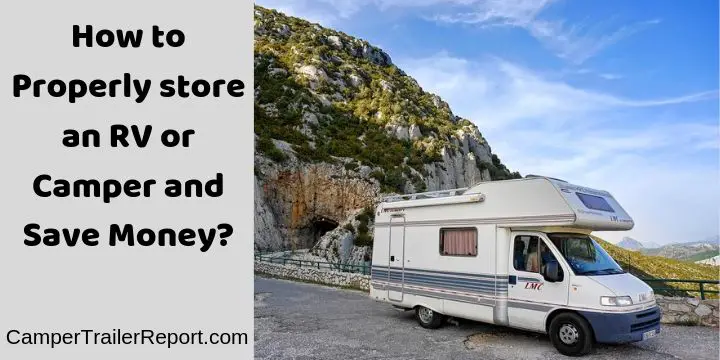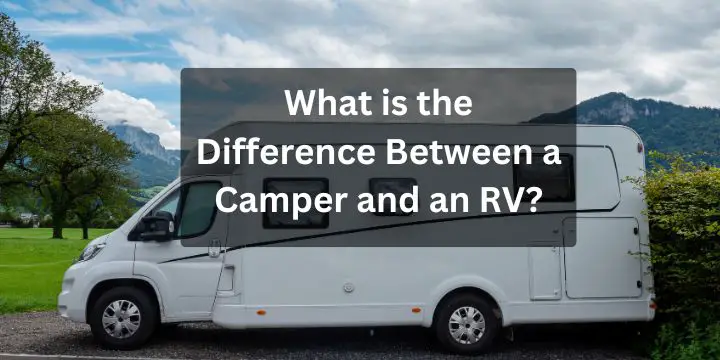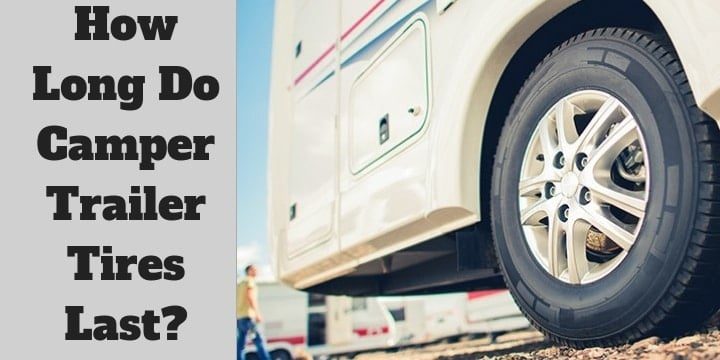How to Properly store an RV or Camper and Save Money?
RVs are a huge investment that you have made despite the type it is. Therefore, it’s very important to protect them so that they can last long and serve you past the amount you bought them. One way that you can protect your RV is by storing them well when they are not in use. Here are the different ways on how to store an RV, trailer or camper:
Storage of an RV at home.
Many countries are restricting RV owners from storing their RVs at home. You should therefore first check whether your country accepts people to store RVs at home. There are different ways which you can use when at home to store your RV. Some of them include buying covers for the tires and covers for the body of your RV.
The covers should be breathable to avoid molds growing on the RV. The tires must also be inflated when storing the RV. You should also ensure that that the inside covers are down to prevent your furniture fading away due to sunlight.
During the winter season, you should do some winterization for your vehicle by cleaning it out and flushing the clear lines so that it can survive the winter period. The winterization process should be done to the vehicle when storing it for a short and long duration of time.
You should also ensure that you don’t leave any perishable food in the drawers and cabinets.
> You may also like:45 RV Accessory Must-Haves for Your Travel Trailer<<
When storing the RV in other places.
Storage of your RV ensures that it remains in the right shape and works efficiently throughout. If you are not storing your RV at home, there are other facilities that offer storage to RVs such as storage centers where you can rent storage units to store your RV furniture, boxes and any other belonging that you possess. The storage units can be rented for a long and short period of time.
The facilities usually have large spaces for your RV, they also offer security and air conditioning which will preserve the RV, camper or trailer for the period that it won’t be in use.
The facilities are usually built with steel materials thus maintaining warm conditions even during the winter season thus preserving the RV for a long period of time without having any issues.
After taking your RV or trailer to these storage facilities, you should ensure that you remove all valuable things that are in the RV, ensure that all the water that is in the clear lines and tanks is completely drained, completely fill your fuel tank, open the refrigerator door and put some baking soda so that mold doesn’t grow inside. Also, clean the RV both on the inside and outside.
RV storage is a very important task that every RV owner should consider doing so as to protect it from harsh weather conditions and theft. Proper storage of your RV ensures that it’s on the right shape all the time and it doesn’t have any failure. Therefore, every RV owner should go for RV storage especially in the winter season.
> You may also like:Worst 5th Wheel Brands to Avoid <<
How to save money by properly storing your RV?
• Month-to-month RV check:
Take care of your RV month-to-month if it is not in use. You will need to ensure that everything is in order and functional, that is no rodents have passed and destroyed the wiring, or the underbelly is not broken, and no water has found its way into the RV through any breaks.
• Outside vent covers:
For high-temperature water, heater and cooler, buy RV affirmed outside vent covers. For instance, this prevents creepy crawls from structural settlements in these areas that can damage wiring, plumbing in various sections.
There are a few ideas regarding electronic gadgets that can be used to scare away rodents, use bug collars or other products to prevent beetles. As a precautionary measure, subterranean insect traps can also be placed inside the RV. In any event, the key theme is to maintain creepy crawls and rodents from harming your RV.
• Examining the Underbelly:
Inspect any holes or openings on the bottom of your RV. Open inside storerooms and cupboards at every stage when it’s dim, switch on every single inside light and inspect the underside of the RV for any places where light can pass. You would then be able to seal the metal flows with tube tape and silicone. This counteracts mice, squirrels, or various rodents from tunneling into your RV. Another option in filling holes is by using the waterproof splash froth.
• Tire Safety:
Make sure your tires are correctly swelled and purchase high-quality wheel coverings. Wheel spreads will shield your tires from the sun’s UV rays from disintegration.
> You may also like: 25 Best National Parks in the USA <<
• Locking Your RV:
Buy your fifth wheel with a link style lock. A trailer for motion will involve a lock for the trailer hitch. This kind of lock clasps on the coupler, preventing the glitch from going over any ball. There is a variety of available items. Whether or not your storeroom is safe, there should be an extra layer of certainty and real emotions of serenity to ensure your RV is as reliable as it can.
Many RV manufacturers use a comparable key for all external capability compartments. If you are concerned that your flame broil seats may vanish, you can alter the locks yourself. Once again, true serenity is often worth a cost.
• Battery and LP Supply:
Include the “execution” of the battery and the supply of LPG to your list as one of the means you encounter when you return from your camp trip and get your RV in capability. To save cash on battery life, countless RVs are equipped with a battery switch that closes off the battery carefully, staying away from it along the lines.
If you don’t have a switch, you can cut the breaker of the battery and stay in a handy, secure place for your next trip (maybe inside the RV or tow car).
• RV Covers, Tarps, and Moisture:
Make sure that the spread is customized if you secured your RV with a specially designed canvas. Humidity can change the shape and take control of the outside, shade, underbelly, or indoor holes. Setting one or two Rid Damp compartments or a proportional compartment inside your RV may assist in dispensing with the growth of dampness.
• Saving cash on Perishables:
If you bring your RV away from your kitchen cupboards in a hot climate or for more than a month, it is recommended that you do away with any sustenance items. In an unused RV, boxed sustenances might retain humidity from warmth and stickiness. Indeed, excessive warmth can destroy even toothpaste, antiperspirant, shampoos, sunblock, and so on. RV wipe from back to the front helps to maintain these nuisances from getting inside.
• Washing / Waxing Your RV:
During your movements, cleaning your RV is essential to dispose of the aggregated soil. Aggregated dirt can damage the paint and then stains the RV. External waxing will assist in shielding the paint from hazardous UV beams.
You may also like:Gas vs Diesel For Towing a Fifth Wheel?<<
Related Questions:
How do you store a camper when not in use?
Just like your automotive, storing your camper is easily done through the obvious solution of parking it within your property. It is a no-brainer when you live on a large piece of land or in a rural area. It will save a lot of money and give you more access to your camper when you use your driveway or garage to park it. However, not everyone can enjoy this luxury, and paid RV storage facilities will be the only option.
How do you store an RV long-term?
There are several ways to store an RV for the long-term such as:
- Indoor storage offers the best perks but the most expensive of the three. The RV storage buildings’ secure shelter helps prevent damages associated with rain, snow, wind, and sun.
- Covered storage will offer security and protection from some elements like snow and rain; however, the RV will still be exposed to the other elements.
- Unlike the other two, outdoor storage will not provide shelter from harsh weather conditions such as snow, rain, sun, and wind, but it is the cheapest of the three.
Video Overview: What Failed in Long Term RV Storage: Lessons Learned After Storing our Bus for 1.5 Years
Is it better to store RV with slides in or out?
It is advisable to store the RV with the slides in. This is because when the slides are out, it increases the risk of damage to the RV, such as damage to the slide’s toppers, slides walls, stresses on the RV frame, leaking seals, and structural damage. Storing with the slides will keep the RV tidy and minimize the stated risks.
Should I keep my RV plugged in when not in use?
There is no problem in leaving the RV plugged in. however, for older versions of RVs that don’t have a modern battery tender or converter, the RV shouldn’t be left plugged in. monitoring of the electrolytes levels is encouraged for the batteries to ensure they don’t dry out or get low.
Can I leave slide out on the camper in winter?
You should not, during winter, leave the slide-outs on the camper open. Snow could bring about extensive damage to the slide-out roofs due to excessive weight leading to damage to the slide-out mechanisms. Severe damage can be occasioned on the slide toppers awnings, and exposure to the freezing weather could lead to cracks and damage of the weather seals.
Are RV slide-outs problematic?
RV slide-outs are susceptible to leaks, failure, and misalignment. There are different cons and pros associated with the type of slides you have on your RV, whether electric or hydraulic.



